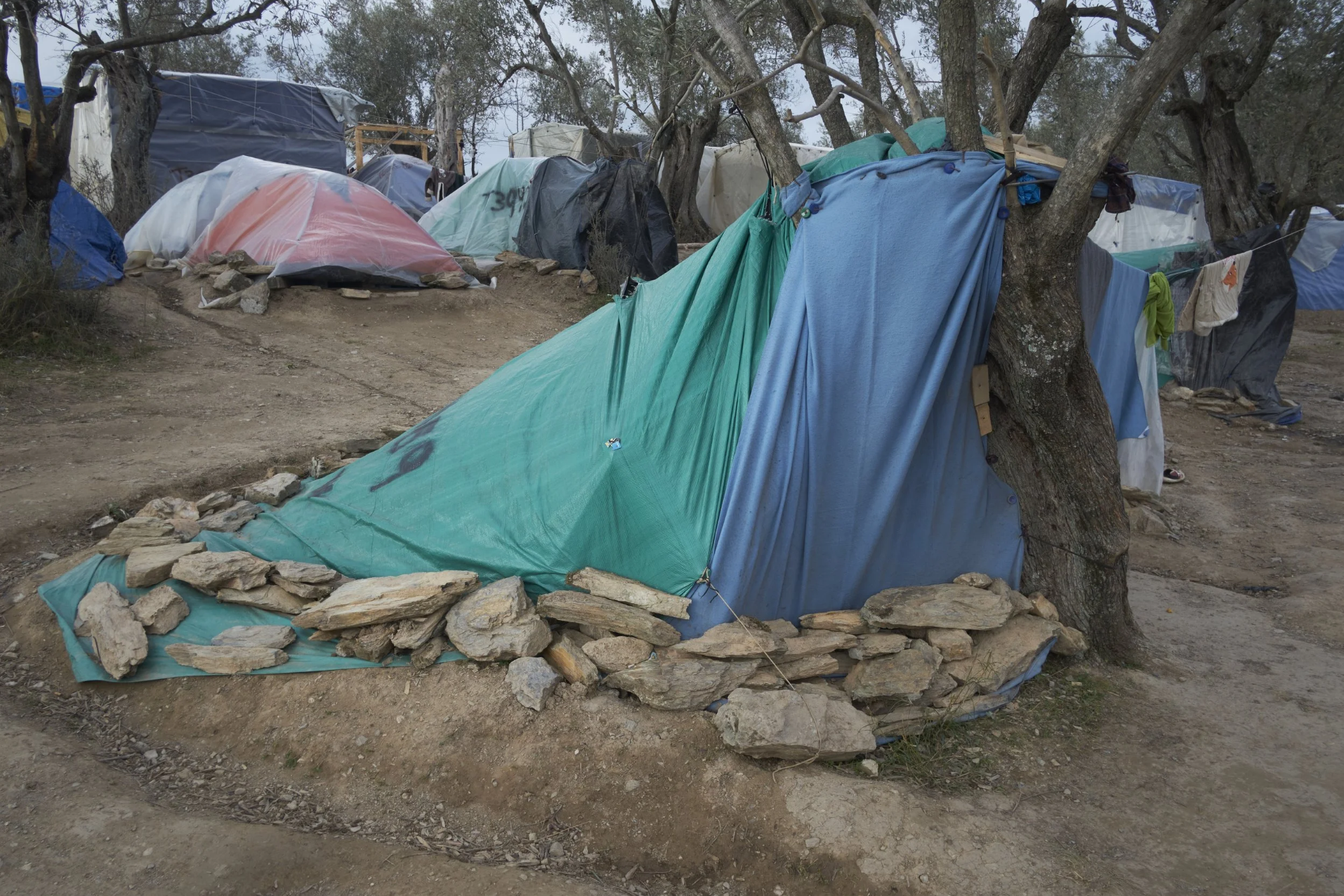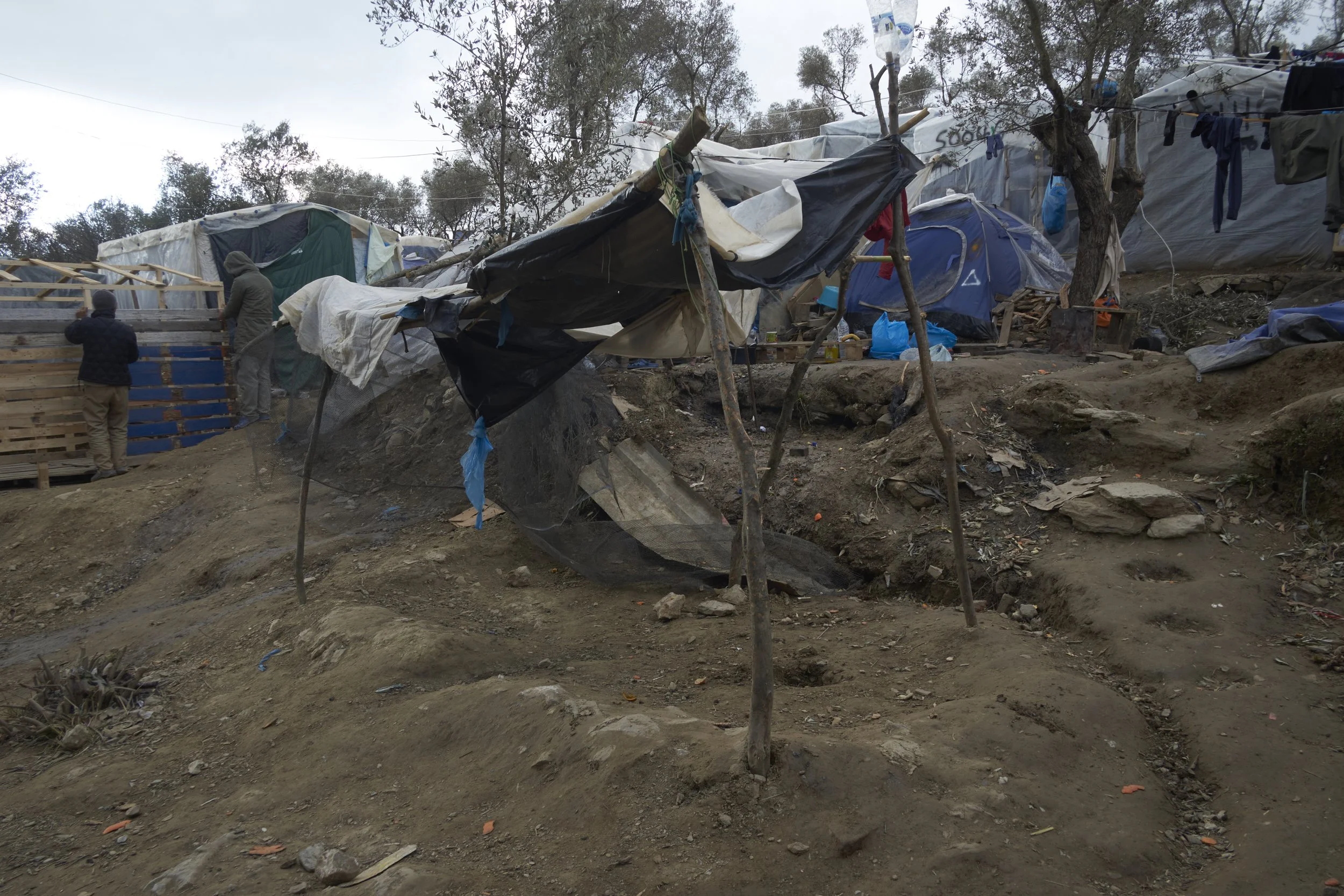Refugee Stories
Portraits in Exile
Ahmed from Deir ez-Zur, Syria. 2020.
“The closer we get the more we find we have in common”
In progress.
From the first time I stepped into a refugee camp, I have never stopped being dismayed by how easily dignity is taken from those who live there. Too often, they are portrayed in the media not as refugees seeking safety, but as migrants, not as people in need of sanctuary, but as takers. This is despite the reality that, as of 2023, 98% of Syrian asylum applications continued to be approved, alongside 99% of Afghan and 66% of Iraqi applications.
It is also important to note that under the 1951 Refugee Convention, everyone has the right to seek asylum and to have their claim assessed fairly. Under international law, especially the 1951 Refugee Convention (Article 31), people fleeing persecution have the right to enter a country to seek asylum, even if they do so without prior authorisation, for example, without a visa or through irregular means. That means their presence isn’t “illegal” while their asylum claim is pending. They only become “undocumented” or “irregular” if their claim is rejected and they remain in the country without permission.
The current politics of migration stand in direct contradiction to international law. Migration has been criminalised by our elected politicians, who stir public debate, then form policy to appease us, sterilising our capacity for empathy.
Hence, I wanted to begin sharing who these people are, one by one, away from the group images we see on television that strip individuals of their identity by herding them together into a single misunderstood mass. My aim is not to evoke pity, but to recognise something of each person, to prompt us to question our assumptions and perhaps re-evaluate how we see them.
Dignity lies at the heart of migration, in the will to survive, in self-worth, fortitude, and an enduring hope that drives people forward. In truth, it is all that we ourselves consider dignified that propels people to leave: safety, opportunity, care for one another, the freedom to speak without fear, and access to things we take for granted, clean water, electricity, food, warmth.
This ongoing project brings together portraits and short stories made inside refugee camps. Each portrait disguises the immediate environment, creating a space where the individual can be seen beyond circumstance, then in some cases followed by a juxtaposition between who they are and where they find themselves.
Abdel
“ I left Damascus, Syria in 2013. First I moved to a city near Palestine and then spent five years in Istanbul. I managed to get work in Turkey but they don’t want us there. They use us, hit us. When I took a bus they would speak badly of me, like I was an animal.. They just want to use refugees. Some bad Turkish, some bad.
I have a daugther in Damascus, not safe, wife too, very difficult. I have never seen my daughter. I was in the army in 2011, national service. I left as I did not want to fight this war. I finished my studies as a vetenarian before the army.
I hope to bring my wife and daughter to safety. That is all.”
Saleem
“I am from Babylon. I left in 2017 in an attempt to reach my sister and her family who were in Austria at the time. I first went to Turkey, then by boat to Chios where I stayed for three weeks. I approached a smuggler who created a fake ‘Auswize’ which enabled me to leave Chios.
I went to board a boat but the police saw the visa was fake so didnt let me leave the island. After arguing with the smuggler he created ‘a family’ which succeeded at getting us to Athens. We then split. I took a train to Thessaloniki where I met a Pakistani smuggler. We tried to cross to Macedonia but got caught by the Greek Police. A group of three hundred people tried to cross the border together. Eventually we got into Macedonia and then walked for the next six days to Serbia. In those six days I ate two meals. On reaching the Macedonia-Serbia border we were attacked by the Serbian army. They beat me but I managed to run. I then crossed the border intending to get to Belgrade but i didn’t get there, I got caught again at the train station. I stayed there in the woods for a couple of day’s but then got sent back to Thessaloniki.
My sister and her family ended up in Moria. That is another story. So I came here to join them. I hope to move on into Europe and build a life for myself. I left a country at war where it was impossible to stay safe or survive. I am educated and speak several languages so I am sure I can make something of myself. “
Abdel
“I am 67 years old. I got a blue stamp because I have had a heart attack and two strokes. I have come with my six children, all who are under 18. I have three girls and three boys. One of the girls was married but her husband was killed by a war plane. She is here with her two son’s.
I am from the city of Deir ez-Zur. I was a Tailor. I journeyed one month to get here and now do not know what will happen.“
Ahmed
Home in progress at the time of taking Ahmed’s portrait.
“I am 17 years old. A bone was taken from my leg and put into my arm after I was injured by a war plane that bombed Deir ez-Zur. I was treated in Syria, put to sleep in Damascus. It was eight months before I could stand up. I spent two months in hospital. I can’t run or walk easily. My weakness prevents me from helping my sick father.”
Hasan
Hasan, malnourished, comes to speak to the camera in this news report that made the headlines globally after a Russian aerial bombardment in which he lost many members of his family spanning four generations.
“I lost many members of my family during a Russian airstrike. Before the war, life was simple. I studied Sumerian Archaeology at Mosul University and later worked there.
One night, everything changed. I went to sleep in a peaceful city and woke up to ISIS outside my door. Gunfire, tanks, and warplanes filled the streets. Mosul had fallen overnight.
We are a big family. My father is elderly, and I have four sisters and three brothers, two of whom are married with children. I was married too. We lived in central Mosul. When ISIS took control education stopped and I could no longer study or work. I married during that time because we believed life had to continue somehow.
When the Iraqi army began retaking Mosul, ISIS retreated into the Old City and seized our home, declaring it property of the caliphate.. We were ordered to leave with nothing. With nowhere to go, we lived in a cellar for ten months, surviving only on seeds and wheat. My wife was pregnant but miscarried due to hunger. Food prices were impossible, US$75 for a small jar of tomato sauce, US$900 for a bag of flour. ISIS kept everything for themselves.
Eventually, we moved to my uncle’s house. It was the first day of Eid. That same day my brother’s wife died of starvation. Later, a Russian ISIS member came and forced us out again. A week after finding another place to stay a rocket struck the house. Morning became night.
In that bombing, my mother, sister, niece, and several relatives were killed. My mother and sister survived for one more day but bled to death before they could be moved.. When I went outside, people thought I was ISIS and beat me until I fainted. I woke up in hospital, covered in blood, with no documents and nothing left.
After recovering enough to leave hospital, I buried my mother and sister. I returned to university, completed my studies, and graduated as an archaeologist. But my wife left me in 2019 as I could no longer provide or rebuild. Mosul was in ruins, controlled by militias and filled with danger. I decided to leave.
One of my sisters had already reached Germany in 2015. My father, another sister, and two brothers remain in Iraq. I spent six months replacing my lost documents before leaving for Turkey. I tried twice to reach Greece but was caught by Turkish authorities and jailed for a week. On my third attempt, I made it.
Now I only want a safe place to live. I hope someone will read this and hear our voices.. We just want a simple life, without violence anymore.”
nb.
Over years of meeting and travelling with refugees, my moral compass and curiosity have pushed me to photograph people as individuals rather than as the undifferentiated “mass” we are shown in the media. Focusing on crowds strips people of identity and keeps us at a distance. Conversation does the opposite. Listening to someone’s story, understanding why they fled and what they hope for, reveals shared ground. I believe that direct encounters, even for the most hostile anti-immigration voices, would dissolve suspicion. It is hard to cling to abstractions when you are hearing a young Syrian archaeology professor describe starving on his way to Europe after losing family members in a bombing.
In the run-up to Brexit, I watched a report from Mansfield, a town with high UKIP support. Residents voiced strong objections to immigration. Then the reporter asked simple questions: “Who does your hair?” “Magda.” “Where’s she from?” “Poland.” “Do you eat out?” “Yes, the Indian; they’re so lovely and hardworking in there.” The contradictions were plain. We often oppose an idea in the abstract while relying on and appreciating the people we fear in our daily lives.
My first dedicated portrait trip was chaotic and hard work. I brought far too much lighting, spread across a huge case and several rucksacks, and smuggled it all into the camp with the help of residents.. Two guys lent me their tent, and we turned it into a studio. Around midday, a line of riot police lingered outside for half an hour. We stayed silent until they moved on. Throughout my time with refugees, the only real trouble I have faced has been from authorities, rarely from the army and more often from the police.
Working this way across several camps has been heart-shaping. I was constantly juggling things, thinking, composing, managing the flow, while building relationships, listening, and earning trust. The stories ran deep, of vast material losses, families wiped across generations, life-changing injuries and invisible wounds. Yet again and again I met civility, hospitality, and highly educated polyglots. Photographing and listening often gave way to self-reflection and a sense of my own smallness. Still, the point of the project is simple: to encourage you, individually and as part of a community or state, to think carefully about how you imagine, describe, and respond to people seeking sanctuary.
Method. Portraits are made inside refugee camps. Whenever possible I photograph deliberately obscurring the immediate surroundings, creating space for the person to be seen beyond circumstance, and pair the image with a short account of their history and present situation.










